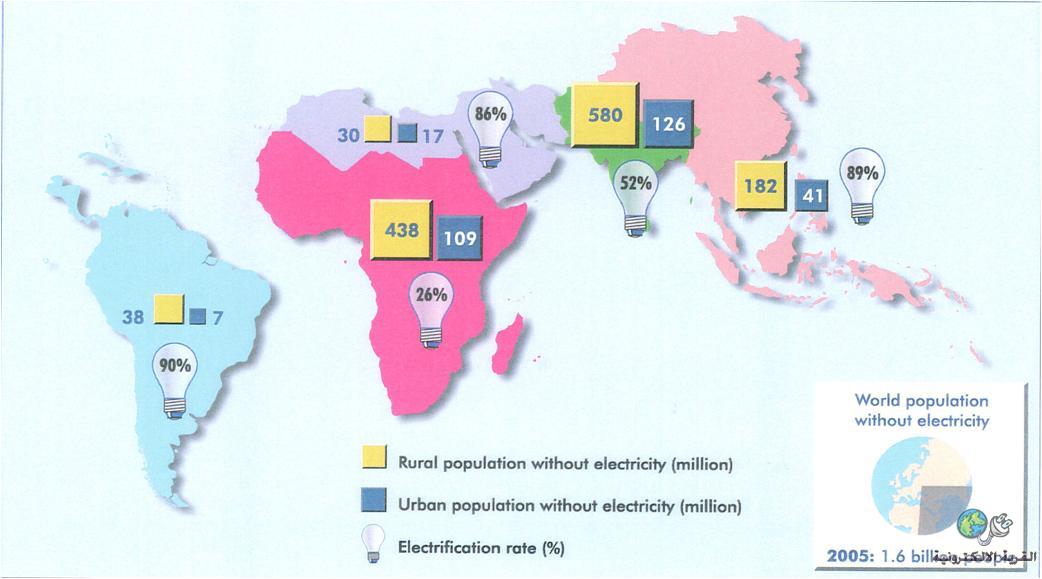سلام عليكم و رحمه الله و بركاته
فى المرة السابقة التى حاولت ان اختصر على الكثيرين عشرات الايام من البحث فى مواضيع منتهية من وجهة نظر العلم و لكن يبدو ان هذا لم يعجب البعض
لذلك سأتعمد ان انشر بعض محاضرات " علماء الطاقة " حول العالم و سأضع المزيد هنا او فى غير ذلك الى قسم اخر تجنبا للصدامات المملة
محاضرة اليوم بعنوان مستقبل الطاقة على كوكب الأرض العرض و الطلب
Future World Energy Supply and Demand
كتبها سير بروفيسور كريس سميث Prof. Sir.Chris Llewellyn Smith
استاذ الفيزياء النظرية بجامعة اوكسفورد
رئيس المجلس الاعلى للعلوم بالجامعة
نائب رئيس الجمعية الملكية البريطانية
القيت المحاضرة المنشورة فى القاهرة 31 مايو 2010 قاعة ايورت الجامعة الامريكية بالقاهرة - الجمهورية المصرية
و الأن مع المحاضرة و سأترجمها كلما توفر وقت و ارحب بمساهمة الاخرين فى الترجمة تسهيلا على اخوتنا العرب
الان مع المحاضرة
Future World Energy Supply and Demand
Available energy is the main object at stake in the struggle for existence and the evolution of the world” Ludwig Boltzmann
Energy Facts
The world uses a lot of energy, very unevenly
at a rate of 16 TW. Per person in kW:
World – 2.4, USA -10.3, UK – 4.6, China - 2.0, Egypt – 1.2, Bangladesh - 0.21
Note: electricity production only accounts for ~ 1/3 of primary energy use, but this fraction can/will rise
World energy use expected to increase ~ 40% by 2030
Increase needed to lift billions out of poverty in the developing world
80% of the world’s primary energy is generated by burning fossil fuels (oil, coal, gas) which is
causing potentially catastrophic climate change, and horrendous pollution
unsustainable as they won’t last forever
Will elaborate on developing world and sources of energy,
then ask:
What are the time scales to prepare for the end of fossil fuels, and for actions to avoid climate change?
What actions can/should we take?
1.6 billion people (~ 25% of the world’s population) lack electricity:

There will have to be a change of expectations in both the developing and the developed world
For world energy use per person to become the same as in
The USA
- total world energy use would have to increase by a factor of 4.3 (5.9 when world population reaches 9 billion)
The UK
- total world energy use would have to increase by a factor of 1.9 (2.6 when world population reaches 9 billion)
This is not possible
Sources of Energy
World’s primary energy supply:
Approximate thermal equivalent:
81.4% - fossil fuels* 77.5%
9.8% - combustible renewables and waste 9.3%
5.9% - nuclear 5.6%
2.2% - hydro 6.3%
0.7% - geothermal, solar, wind, . 1.3%
* 42% oil, 33% coal, 26% natural gas
Note: energy mix very varied, e.g.
In Egypt: Gas* – 46.4%, Oil – 48.3%, hydro – 1.9%, Combustible etc – 2.1%
* this is 70% of production; 30% is exported
In China: Coal → 64% of primary energy; gas – only 3%
This is (part of) the explanation for the very large number of premature deaths caused by air pollution in China. Annual figures (WHO 2007):
Globally - 2 million deaths, China 650,000, India - 530,000, USA - 41,000